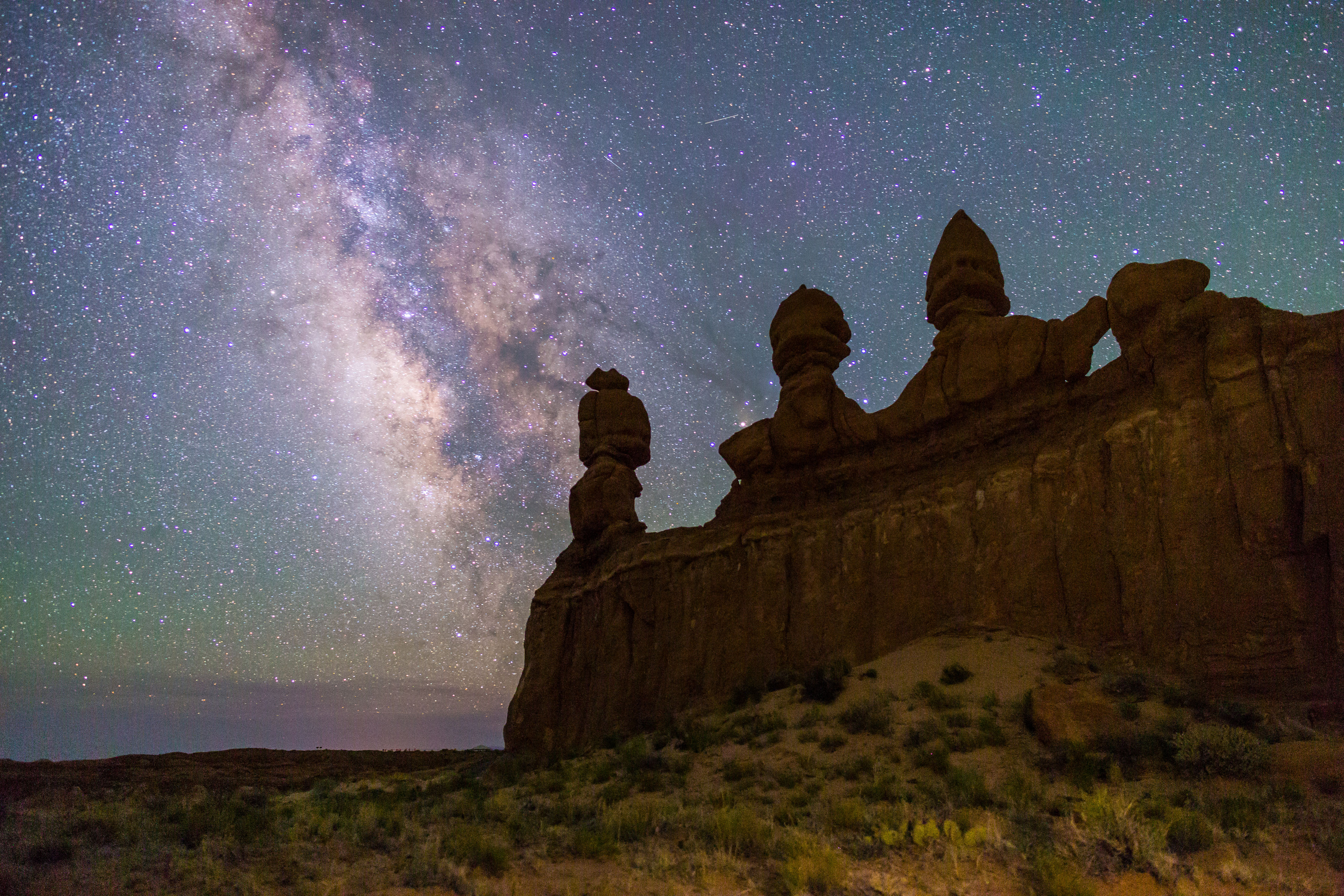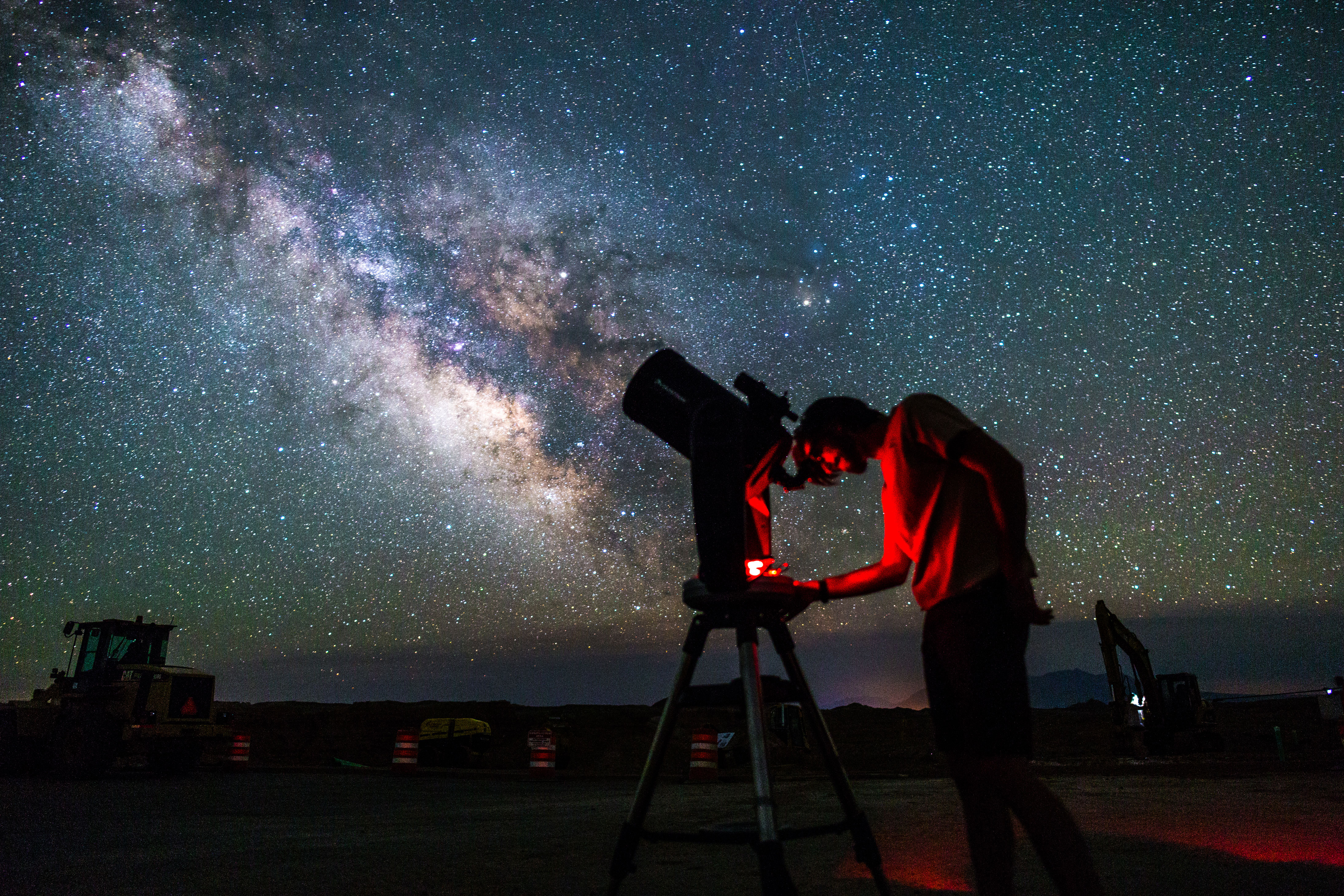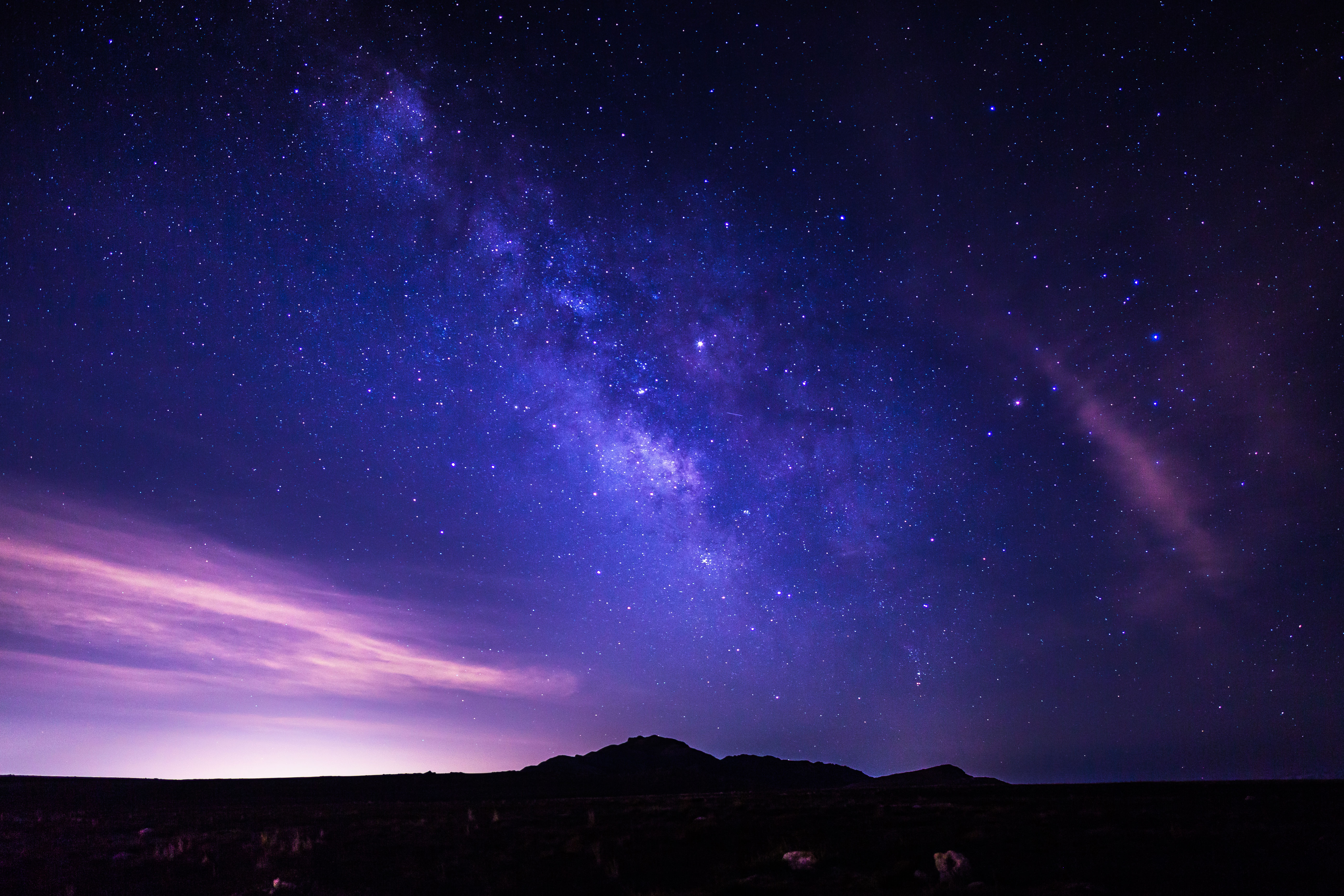Worldwide, light pollution is growing twice as fast as Earth’s human population. In many places, artificial light at night has obliterated our view of the stars and impacted wildlife, public health, and air quality. Next week, members of two international organizations dealing with the issue of light pollution will convene in Snowbird, Utah.
The state of Utah is at the forefront of a global movement to protect the disappearing dark. Utah has more recognized International Dark Sky Places than any other state; in fact, it has more than any country besides the United States. The state’s success in stewarding the natural nighttime environment compelled the two leading organizations dedicated to studying and advocating for dark skies to meet ing Utah for their annual gatherings
The International Dark-Sky Association (IDA) 30th Annual General Meeting will be held Nov. 9-10, immediately followed by the University of Utah-based Consortium for Dark Sky Studies (CDSS) bringing global scientists and researchers of Artificial Light at Night (ALAN) together for the ALAN 2018 International conference Nov. 12-14. On Friday, Nov. 9 at 12:15 p.m. MT, CDSS and IDA will live stream a press conference with subject matter experts and event organizers.
“The location of ALAN 2018 and the IDA Annual General Meeting is highly strategic. The Wasatch Mountains form the dividing line between the Wasatch Front, as light polluted as the Los Angeles Basin, and the Wasatch Back, which boasts multiple parks in the process of becoming accredited International Dark Sky Parks,” said Dave Kieda, dean of the U’s Graduate School and co-director of CDSS. “We believe this geographical juxtaposition gives us one of the best natural labs for dark sky studies possible in the world. Our new academic center at the University of Utah—the Consortium for Dark Sky Studies—is able to leverage that location for research purposes.”

PHOTO CREDIT: Bettymaya Foott
Goblin Valley State Park was Utah’s second state park to receive an International Dark Sky Park designation.
The CDSS is a formal academic center based at the U. Its primary objective is to explore the interconnectedness of life in one of the last great reservoirs of dark sky in the developed world. CDSS is the local partner for the ALAN 2018, which brings together researchers and scientists from around the world to discuss the broad impacts of artificial light at night.
“Dark skies are an entry point to questions of public health and social equity. Intriguing initial research from NOAA has been conducted that bears follow-up; there is a chemical reaction in dark skies that may ‘scrub’ a bit of air pollution at night without cost of even possibly while saving money,” said Daniel Mendoza, research assistant professor of atmospheric sciences and pulmonary fellow in the School of Medicine at the U. “Also, we must consider the health impact of over-lighting. Economically challenged areas are generally where air and light pollution are at their highest residential levels.”
The IDA has worked to fight light pollution since 1988. Protecting the night sky from light pollution is a critical mission that supports human health, preserves wildlife habitat and provides visual access to celestial objects for professional and amateur astronomers alike. Every year, experts, advocates, artists and night sky enthusiasts from around the globe gather to share their success stories, case studies and passions for protecting the night. The IDA has worked extensively with Utah’s parks, monuments and neighborhoods to improve their night skies. The work not only benefits star-gazing—dark skies over the Colorado Plateau will have generated nearly $2.5 billion and 50,000-plus jobs between 2013-2023, according to a report. Considerable impact, said Kelly Bricker, director of parks, recreation and tourism at the U.

PHOTO CREDIT: Bettymaya Foott
Astro-tourism is considered the most lucrative segment of the eco-tourism market. Star-gazers stay overnight and eat two meals in the local community.
“You can’t ‘drive through’ dark skies; it requires an overnight stay plus two meals. That is why astro-tourism is considered the most lucrative segment of the eco-tourism market,” Bricker continued.
“A number of communities in Southern and Central Utah are seeking to transition from traditional industries to the clean economic growth afforded by dark skies. Eighty percent of the developed world can no longer view the Milky Way and needs to travel to do so. The dry air of Utah and the superb public lands offer that opportunity,” added Stephen Goldsmith, associate professor, city and metropolitan planning and co-director of CDSS.
In an open-to-the-public event, Harun Mehmedinović and Gavin Heffernan will present SKYGLOW, a three-year astrophotography project culminating in more than 3,000,000 images (Sunday Nov. 11 from 4-6 p.m.) The SKYGLOW book and presentation explores the history and mythology of celestial observation, the proliferation of electrical outdoor lighting that spurred the rise of the phenomena known as “skyglow,” and the dark sky movement that’s fighting to reclaim the night skies.
All events and the conferences will be held at the Cliff Lodge, Snowbird Resort in Little Cottonwood Canyon, above Salt Lake Valley.

PHOTO CREDIT: Bettymaya Foott
Just 40 miles outside of Utah’s urban center, Antelope Island State Park’s night sky protection efforts have preserved breathtaking views of the Milky Way.
The IDA 30th Annual General Meeting
Nov. 9-10, 2018
Program available here.
CDSS/IDA joint press conference
Nov. 9, 2018 | 12:15 p.m. MT
Room Magpie A
For streaming information, contact lisa.potter@utah.edu.
SKYGLOW screening/presentation
Nov. 11, 2018 | 4-6 p.m. MT/6-8 p.m. ET
More information here.
ALAN International Conference
Nov. 12-14, 2018
Program available here.
Press registration:
Media registration is complimentary. To attend the IDA Annual General Meeting, contact amanda@darksky.org. For the ALAN conference, contact Janet Muir at janet.e.muir@gmail.com.
Press facilities will be available at Snowbird for both events, including internet and print capabilities.
Additional information:
Find dark sky experts available for interviews here.
International Dark Sky Association: darksky.org
Artificial Light at Night: artificiallightatnight.org
Consortium for Dark Sky Studies at the University of Utah: darkskystudies.org


